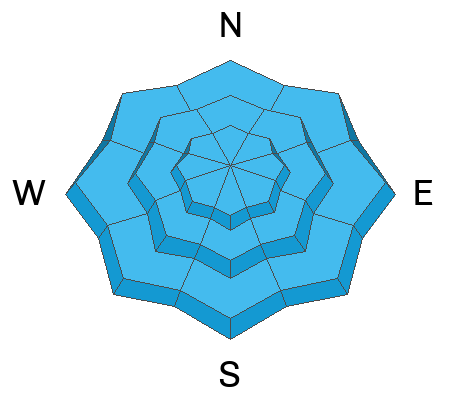Thanks for showing up Tuesday night and supporting the UAC. It was great to see everybody at the Cache! You made our annual Pray for Snow party/fundraiser a big success.
Join the Utah Avalanche Center and the Division of Outdoor Recreation to celebrate the Fourth Annual Avalanche Awareness week, from December 4 - December 11. Click
HERE to view the full list of events for the week.
Last week's heavy snow and drifting overloaded many slopes plagued by buried weak layers and poor snow structure. Dangerous human-triggered avalanches remain possible for people to trigger, especially on previously drifted upper and mid-elevation slopes. With the new snow, and elevated winds on the horizon fresh drifts could be very sensitive and we can expect to see people triggering avalanches today at both mid and upper elevations. It's possible that a small avalanche overrunning a slope with poor snow structure could step down into sugary November snow and create a much larger hard-slab avalanche.
Although much less frequently in the last few days, observers continue to report localized audible collapses or "wumpfs" from across the zone. Collapsing indicates unstable snow and real potential for dangerous slab avalanches failing on a buried persistent weak layer.
The National Weather Service has issued a Winter Storm Warning that will go into effect this morning at 11:00 am lasting through Tuesday at 5:00 pm. A significant winter storm will impact the area through at least Tuesday, with the potential for lingering snow into Wednesday. Strong south-to-southwesterly winds will continue through the day today and into tonight, with gusts well above 50 mph. Snow will develop this afternoon, becoming heavy near 3-6 PM tonight. Total snow accumulations of 12 to 24 inches. Temperatures will remain in the mid-30s F throughout the day, before plummeting into the mid-teens F overnight.
Snowfall may decrease in intensity late Monday morning into Monday afternoon, and redevelop later Monday afternoon into Monday evening with additional accumulation.
With this storm, avalanche conditions will rapidly be on the rise. Snowfall rates may exceed 2 inches per hour at times, which will greatly increase the sensitivity of the snowpack.
Yesterday, there was one skier-triggered avalanche reported from Providence Canyon. This avalanche was unintentionally triggered on a North aspect, at 8700'. It failed as a soft slab sitting on atop facets 2.5' deep. It broke 100' wide and ran 500' in distance. The skier was alerted via radio and able to safely traverse off the avalanche.
Find full observation HERE.
Several people ventured into the backcountry terrain on the Beaver Backside last Wednesday and some reported collapsing, but no avalanches were reported from the area.
Remember, when you leave the ski area, you are entering the backcountry and you could trigger dangerous avalanches.
***See our updated list of observed avalanches from across Utah
HERE 







